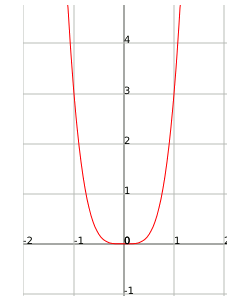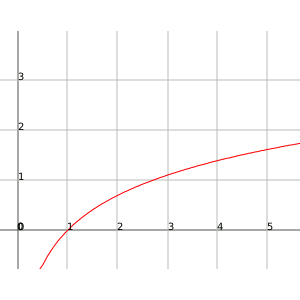Finite limits
We will start by showing a small summary of the properties of finite limits.
Let's suppose that
- If
- If
- If
- If
Example
If
Infinite limits
Let's start by defining what an infinite limit of a function is
Intuitively, it means that we can have
Similarly, we define:
and for limits when
Let's see three basic examples of functions that tend to infinity:
Example
and in particular
From this point, we deduce that the polynomial functions tend to infinity as

In this example we can see the function
Example
Exponential: if
and likewise if

An example for this case is the function
Example
Logarithmic: if
Similarly if

For example, the function
Infinite's arithmetic
Let's suppose that
However, we will have problems when we encounter situations like the following one:
since to if we subtract infinity from infinity it gives us an indeterminacy.
Similarly, we might ask ourselves about these properties when we a function with an infinite limit and one with a finite limit.
Let's see a small table that will show us how to work when we have different kinds necessary to produce infinity with other infinites and with finite limits:
| SUMS | PRODUCTS |
| DIVISIONS | POWERS |
| if |
|
| if |
|
| if |
|
| if |
|
| if |
These operations can be realized after finding the limits of the functions involved.
Nevertheless, the operations that are not in the table can produce indeterminacies, for example, the following expressions:
